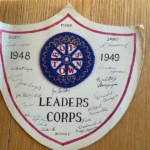Authenticity is when your actions are a full expression of who you are in a way that contributes to the world. You are in alignment with what life wants from you. The Authentic Way is the awareness that you don’t need to change yourself; you need to come home to yourself.
Words I hear used to describe what it’s like to be authentic, at home with yourself: happy, confident, peaceful, free, brave, calm, inspired, appreciative, alive, fulfilled, ‘you lose all track of time.’
Words used to describe when how you live is not the real you: exhausting, anxious, depressing, sad, irritable, stressed, lonely, disengaged, empty, lost.
How to hold yourself accountable to be authentic:
- Decision. Like any choice to change your life, it starts with a decision – a firm resolve to live your life authentically.
- A Benchmark. Have a sense of what authenticity feels like to you: have a vision of what “coming home” means to you. Know you’ll be “off course” much of the time in a world that expects much from us.
- Community. Authenticity is a lonely journey but it can’t be done alone. Community can come in the way of teachers, guides, confidants, and coaches – those who support you and hold you accountable to be who you are.
- Self-Reflection. The authentic journey is a contemplative journey. Reserve time on a regular basis to turn off technology to attend to the voice from within.
- Journaling. Regularly writing down your emotions, reflections, dreams, values, progress, and gratitude, can help keep you connected to your authenticity.
- Feedback. Be open to how you are impacting others. Stay humble. Being teachable is a core quality of authenticity.
- Uniqueness. Create a list of ways you come home to yourself, nourish yourself, and attend to these regularly (e.g. spending time in nature, with good friends, with animals you love, reading books, cooking, going to museums or the theatre, etc.)
- Service. Authenticity means bringing your gifts to the world in a way that makes the world better – even in some small way. Be sure you are intentional about making a difference.










